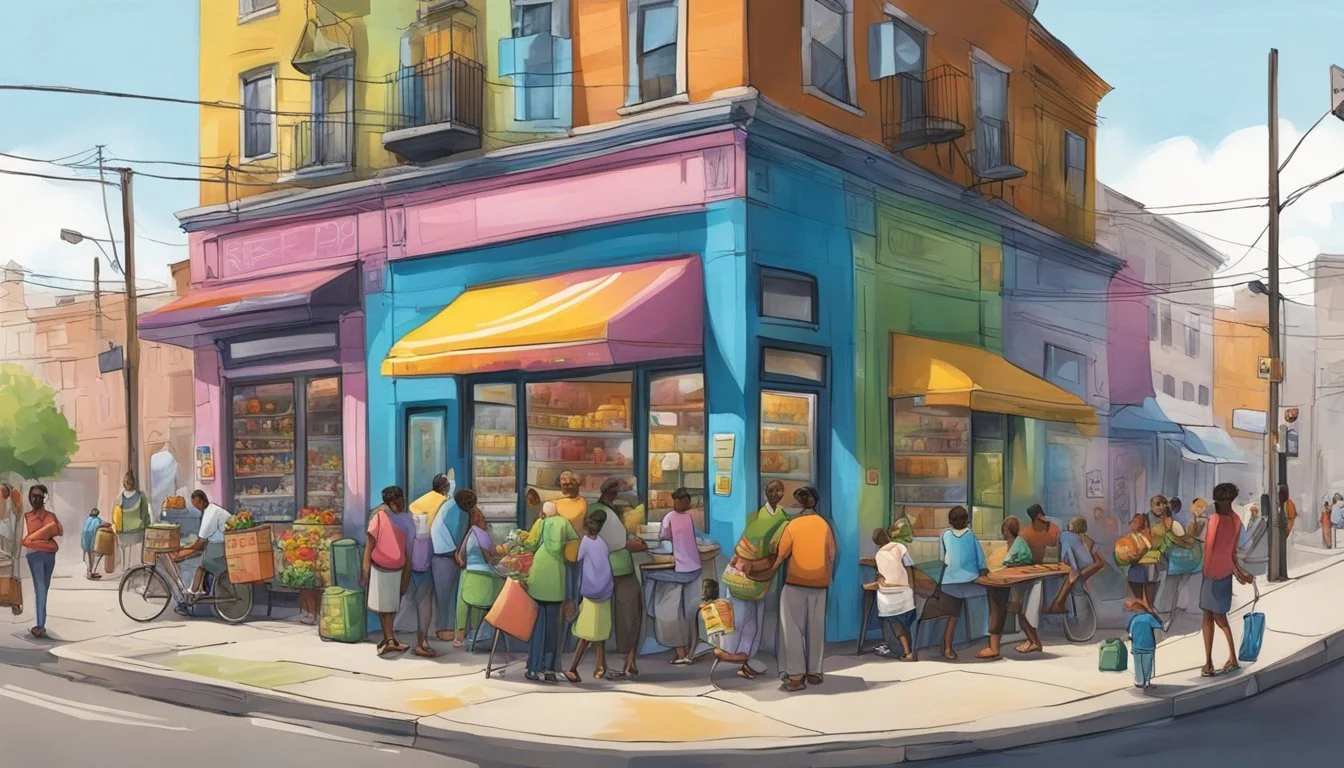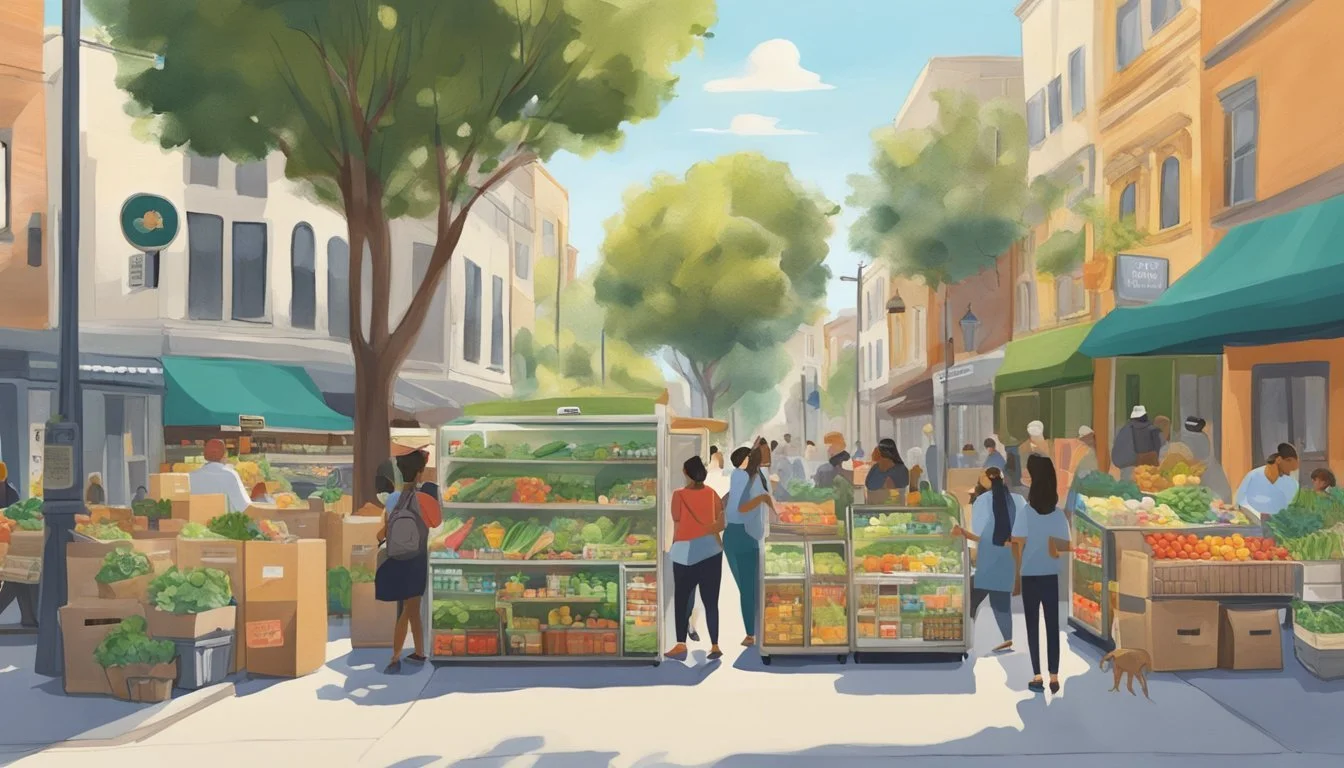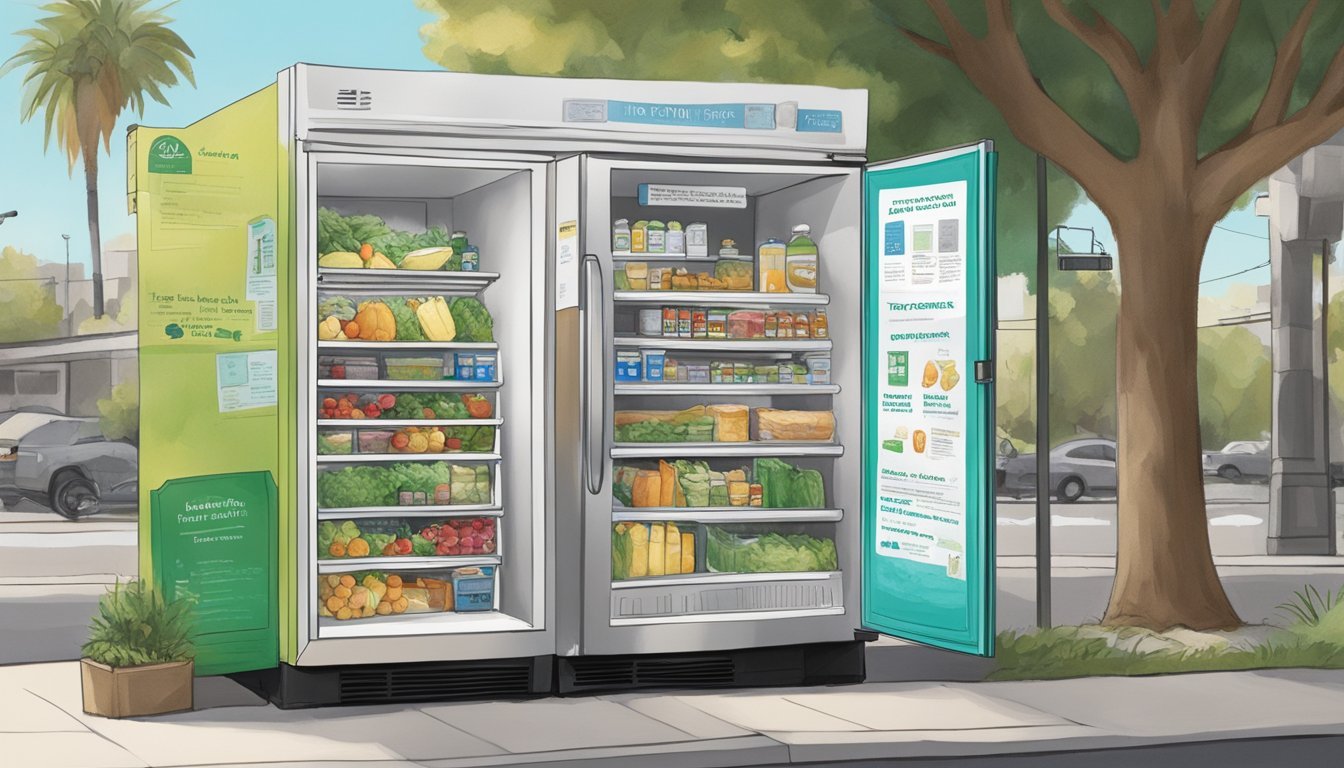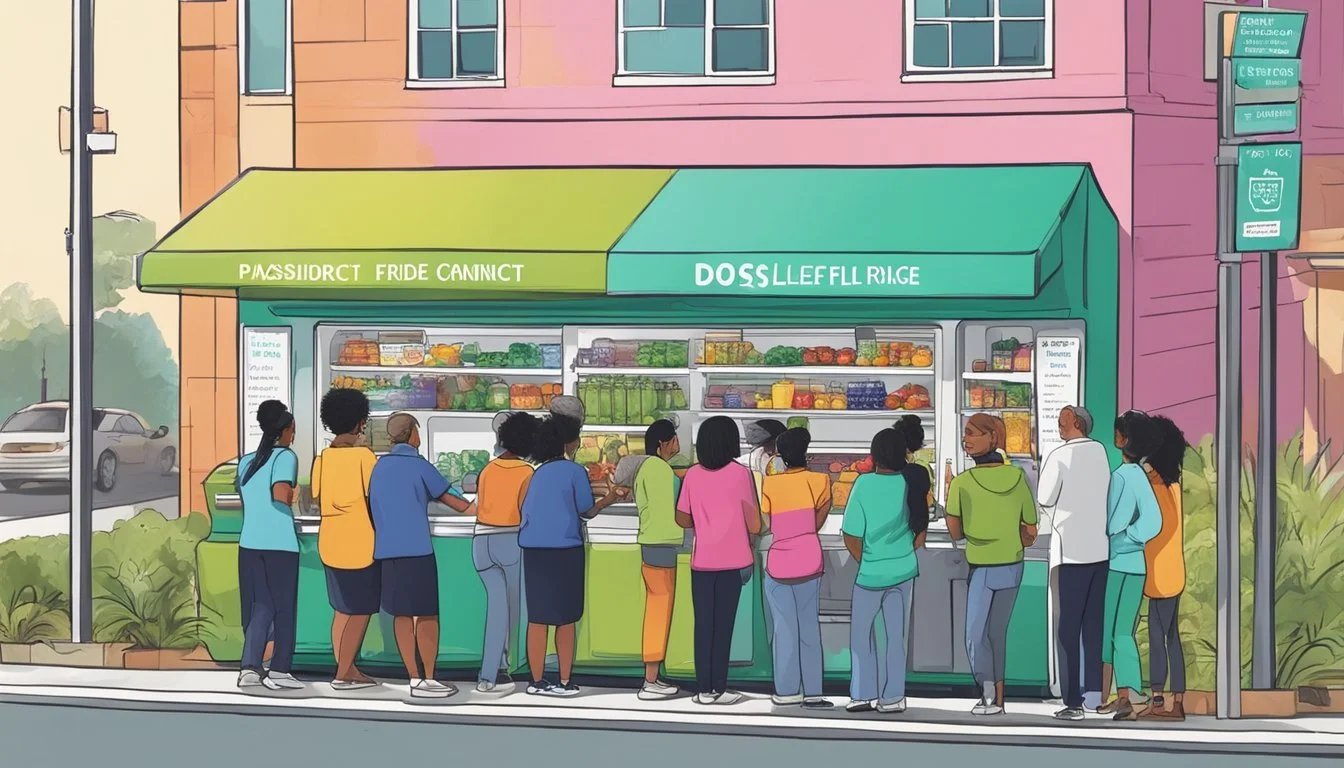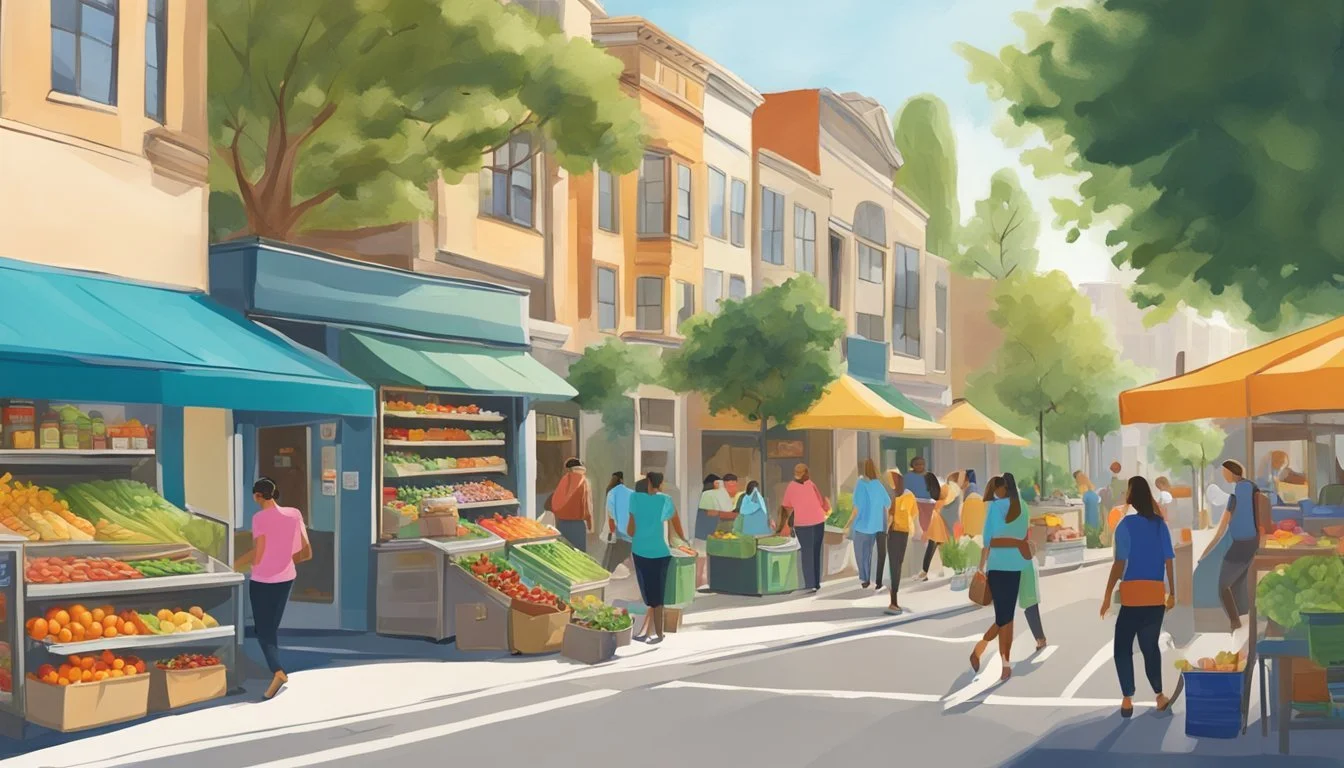Pasadena, CA Community Fridge
Nourishing the Neighborhood Together
Community fridges have emerged as an innovative solution to food insecurity and food waste, providing free access to fresh food for those in need. In Pasadena, California, the presence of a community fridge offers a grassroots approach to alleviating hunger and fostering a spirit of sharing within the community. Positioned in accessible locations, these fridges are regularly stocked with perishable and non-perishable food items by businesses, organizations, and local residents.
The concept is simple yet profound: take what you need, leave what you can. This model encourages food sharing and reduces waste, ensuring that surplus food reaches those who might otherwise struggle to afford it. Pasadena's community fridge operates on this premise of mutual aid, relying on the collective responsibility of its citizens to maintain and utilize the resource responsibly.
Being a part of a wider network of freedges—community refrigerators that operate across the nation—Pasadena's community fridge not only addresses immediate nutritional needs but also knits the community closer together. It stands as a testament to the city's commitment to sustainability and its active engagement in social welfare. The fridge is not just a repository for food but also serves as a canvas for local cultural expression, often adorned with artwork that reflects the community's aspirations and solidarity.
History of Community Fridges
Community fridges have emerged as a novel approach to addressing food insecurity and waste, characterized by their open access and community-driven nature. These initiatives rapidly expanded during the pandemic, highlighting the need for innovative food sharing solutions.
Origins and Expansion
Community fridges, also known as "freedges," trace their roots to initiatives aimed at decreasing food waste and providing food to those in need, often emerging organically within communities. New York City is frequently credited with propelling the community fridge movement in the United States, showcasing the model's viability and effectiveness. The concept gained momentum, further propelled by the increased urgency due to the pandemic, leading to a nationwide expansion. Los Angeles quickly followed suit, with community efforts leading to a network of fridges that offered food freely to anyone, epitomizing mutual aid and collective care.
Key Cities: New York, Los Angeles
Primary Goal: Reduce food waste, provide food access
Pioneer Projects: Community friedges in urban neighborhoods
Growth Factor: Accelerated expansion during the pandemic
Pasadena's First Community Fridge
Pasadena introduced its first community fridge to bring the model's benefits to its residents. Situated within a space easily accessible to the public, Pasadena's community fridge was established in alignment with a broader movement that had taken root across cities like Los Angeles. The project was met with enthusiasm and support from the community, with local businesses, organizations, and individuals contributing to its maintenance and stock.
Location: Accessible public location
Support: Local businesses, organizations, individuals
Operations: Mirrors other successful models, emphasizing food sharing and community effort
Pasadena's engagement in the community fridge movement underscores the city's commitment to fostering compassionate solutions to food insecurity.
Function and Operation of Community Fridges
Community fridges in Pasadena, CA, operate as part of a mutual aid effort to combat food insecurity. They provide free access to food and hygiene products, with volunteers playing a critical role in ensuring food safety and maintenance.
How Community Fridges Work
Community fridges are public refrigerators where individuals or businesses can leave surplus food, which is then available for anyone in the community to take. These fridges are often situated in accessible locations to serve as many people as possible. The concept revolves around the "take what you need, leave what you can" philosophy, with the goal of redistributing food that would otherwise go to waste.
Accessible: 24/7 availability for community members
Stocked Items: Fresh produce, prepackaged foods, hygiene products
Source of Food: Donations from individuals, businesses, and organizations
Volunteer Roles and Responsibilities
Volunteers are the backbone of the community fridge operation. They are responsible for various tasks that include:
Cleaning: Regular sanitizing of fridge and surrounding area
Stocking: Organizing donations and checking for expired items
Outreach: Educating the community about the fridge and encouraging participation
Monitoring: Ensuring the fridge operates smoothly and safely
Volunteers work in shifts and coordinate through community groups to perform these duties.
Food Safety and Maintenance
Maintaining food safety standards is crucial for the successful operation of community fridges. Volunteers follow guidelines to ensure all items are safe to eat.
Temperature: Ensure the fridge is functioning at the correct temperature to keep food fresh
Expiration: Regularly check and remove expired or spoiled items
Hygiene: Clean shelves and handle food with proper hygiene procedures
Non-perishables: Provision of basic hygiene products alongside food items
The community fridge initiative is underpinned by the principles of mutual aid, connecting those with excess to those in need, all while prioritizing safety and health standards.
Community Impact and Benefits
The Pasadena, CA Community Fridge initiative serves as a testament to the power of collective effort in tackling food insecurity, diminishing food waste, and strengthening social ties within the community.
Addressing Food Insecurity
Pasadena's Community Fridge aims to directly combat food insecurity by providing families and individuals with consistent access to free fresh produce and other food items. The presence of the fridge empowers the community to collectively ensure that no person or family goes without the fundamental need for nutritious food.
Key Stats:
Beneficiaries: Residents experiencing food scarcity
Contents: Often stocked with fresh produce and perishable goods
Access: Available to all, no questions asked
Environmental Benefits
By offering a place to share surplus food, the Community Fridge actively participates in reducing food waste. This initiative not only feeds people but also has a substantial impact on the environment by preventing excess food from ending up in landfills.
Environmental Outcomes:
Reduced Waste: Gracefully redirecting surplus food from potential waste
Sustainability: Encouraging a cycle of using and reusing resources efficiently
Social and Cultural Effects
The Community Fridge does more than address hunger; it fosters a sense of solidarity and reciprocity. Residents who share and take part in the program are not merely involved in an exchange but are part of a social endeavor that transcends cultural barriers, nurturing a sense of community.
Social Dynamics:
Community Building: Strengthening ties among diverse groups
Cultural Exchange: Sharing food often leads to sharing stories and experiences
Sustainability and Challenges
Community fridges in Pasadena, California, offer a unique approach to address food insecurity and promote sustainability. However, they encounter specific funding and operational challenges that impact their success and efficiency.
Funding and Donations
Community fridges rely heavily on donations to maintain a steady supply of resources. They often depend on:
Monetary contributions from local businesses and individuals.
Donations of fresh produce and packaged goods from markets, restaurants, and community members.
Consistent funding streams are crucial for these fridges to remain stocked and operational, ensuring the service they provide remains uninterrupted.
Sustainability Practices
Pasadena's community fridge initiatives embrace sustainability practices such as:
Encouraging the donation of surplus food, reducing waste.
Sourcing from local gardens and producers, diminishing carbon footprints.
These practices contribute to a greener city and lower community-wide greenhouse gas (GHG) emissions, aligning with Pasadena's broader Climate Action Plan efforts.
Operational Challenges
Operational challenges include:
Vandalism and crime, which can jeopardize food safety and the fridges' physical security.
Regulatory hurdles that must be navigated to ensure the fridges adhere to health and safety standards.
Efficiently addressing these challenges is imperative for the continued service and impact of the community fridge program in Pasadena.
Legal and Health Considerations
When establishing a community fridge in Pasadena, CA, organizers must navigate both health regulations and legal liabilities. These considerations are critical to ensure the safety and sustainability of the service.
Health Regulations
The Pasadena Public Health Department mandates that community fridges comply with local food safety guidelines. Community fridges must ensure:
Safe Handling: All perishable food is stored at safe temperatures, below 40°F for refrigerated items and below 0°F for frozen goods.
Cleanliness: The fridge and surrounding area must be regularly cleaned and sanitized to prevent contamination.
Food Sourcing: Donated food comes from approved sources, and homemade or repackaged items adhere to specific rules.
Labeling: Allergy information and expiration dates are clearly visible on food items.
Liability and Legal Framework
Liability coverage and adherence to the legal framework are essential for the protection of the fridge organizers and users. Organizers should consider:
Permits and Zoning: Obtaining appropriate permits and ensuring the fridge’s location complies with Pasadena zoning regulations.
Protection Laws: Being aware of the California Good Samaritan Food Donation Act, which offers some liability protection to donors.
Waivers: Implementing waivers or notices that inform users of potential risks and limit organizer liability.
Consistent Policies: Having consistent policies for food acceptance and distribution to minimize risk.
By closely following health regulations and understanding the surrounding legal framework, the Pasadena community fridge can operate efficiently and safely, providing a valuable resource to local residents.
Community Support and Involvement
The Pasadena, CA Community Fridge initiative thrives through the collective efforts of local entities and the community. Offering easily accessible food to those in need, it reflects a strong spirit of cooperation and solidarity.
Role of Local Businesses and Organizations
In Pasadena, businesses and organizations play a pivotal role in sustaining the community fridge program. Local businesses, such as food shops and markets, often contribute surplus produce, ensuring the fridge is stocked with a variety of fresh options. Meanwhile, non-profit organizations manage the operations, coordinating with food donors, maintaining the space, and ensuring food safety standards are met. These organizations also often handle logistical concerns, such as the fridge's electricity needs and location arrangements.
Public Participation and Education
Public support is another crucial component that sustains the community fridge initiative in Pasadena. Individuals contribute by donating food, cleaning the fridge area, or sharing information about the resource within their networks. Education plays a vital role, with both individuals and groups working to raise awareness about food insecurity and how community fridges provide a partial solution. Educational efforts may include:
Workshops on food donation guidelines
Flyers and social media campaigns explaining how to use the fridge
Local media coverage of community fridge success stories
Through these combined efforts, the community fridges become more than just a source of free food; they are a beacon of community spirit and mutual aid.
How to Start a Community Fridge
A community fridge in Pasadena, CA plays a crucial role in food sharing and waste reduction. Individuals looking to set up such an initiative should focus on establishing trust within the community, securing a strategic location, and forming strong partnerships.
Step-by-Step Guide
Research - Understand the community's needs and legal considerations, such as health regulations.
Plan - Draft a clear initiative plan that outlines the goals, operations, and how to handle donated food.
Funding - Identify potential funding sources for initial and ongoing costs.
Fridge Acquisition - Source a fridge, preferably a donation from local businesses or second-hand options.
Launch - Kick off the community fridge with clear communication around its purpose and usage guidelines.
Finding a Suitable Location
Visibility and Accessibility: Choose a spot that is easy to find and access by community members at any time of day.
Safety and Security: Ensure the location is safe for both users and the food stored, with measures to mitigate any potential health risks.
Power Supply: Confirm a stable power source for the fridge to maintain proper food storage conditions.
Building Partnerships and Trust
Engagement: Collaborate with local community organizations, businesses, and residents to establish a sense of ownership and trust.
Communication: Keep lines of communication open with clear and consistent messaging about the fridge’s mission and need.
Maintenance: Form a volunteer group committed to regular monitoring, cleaning, and restocking of the fridge.
Pasadena Community Fridge Locations
In Pasadena, CA, community fridges offer free food to those in need. They serve as communal points where individuals can access food at no cost and at varying hours.
Map and Addresses
Pasadena Community Fridges are situated in accessible areas to ensure availability to all residents. As community fridges may be established and maintained by different organizations or individuals, specific locations can be found by contacting local food banks, community centers, or searching online for the most up-to-date locations.
Access and Hours of Operation
Community fridges in Pasadena typically provide 24/7 access to allow people to avail of food items at their convenience. Users should respect the space and adhere to any posted guidelines concerning usage and donations to maintain the communal integrity of the fridges.
Resources and Further Reading
In this section, readers will find valuable information on where to access resources and literature regarding community fridge programs in Pasadena, CA, as well as points of contact for local initiatives.
Online Resources
A wealth of information for those interested in community fridges in Pasadena can be found through the Pasadena Educational Foundation. Their website provides:
Detailed articles and updates on community fridge initiatives
Educational materials on food security and community projects
The ChangeX platform offers:
Guides on starting a community fridge
Access to funding and resources for social projects
Local Initiatives and Contacts
Local initiatives such as LA Community Fridges play a significant role in providing food accessibility. They offer:
A network of community fridges throughout Los Angeles, including Pasadena
Opportunities for individuals and businesses to collaborate and support
Contacts for these programs can typically be obtained through:
Email: Direct inquiries to local organizations running these fridges
Physical visits: Engaging with fridge locations to connect with volunteers and coordinators
For those looking to contribute or begin a community fridge in Pasadena, these resources and contacts provide a solid starting point.


